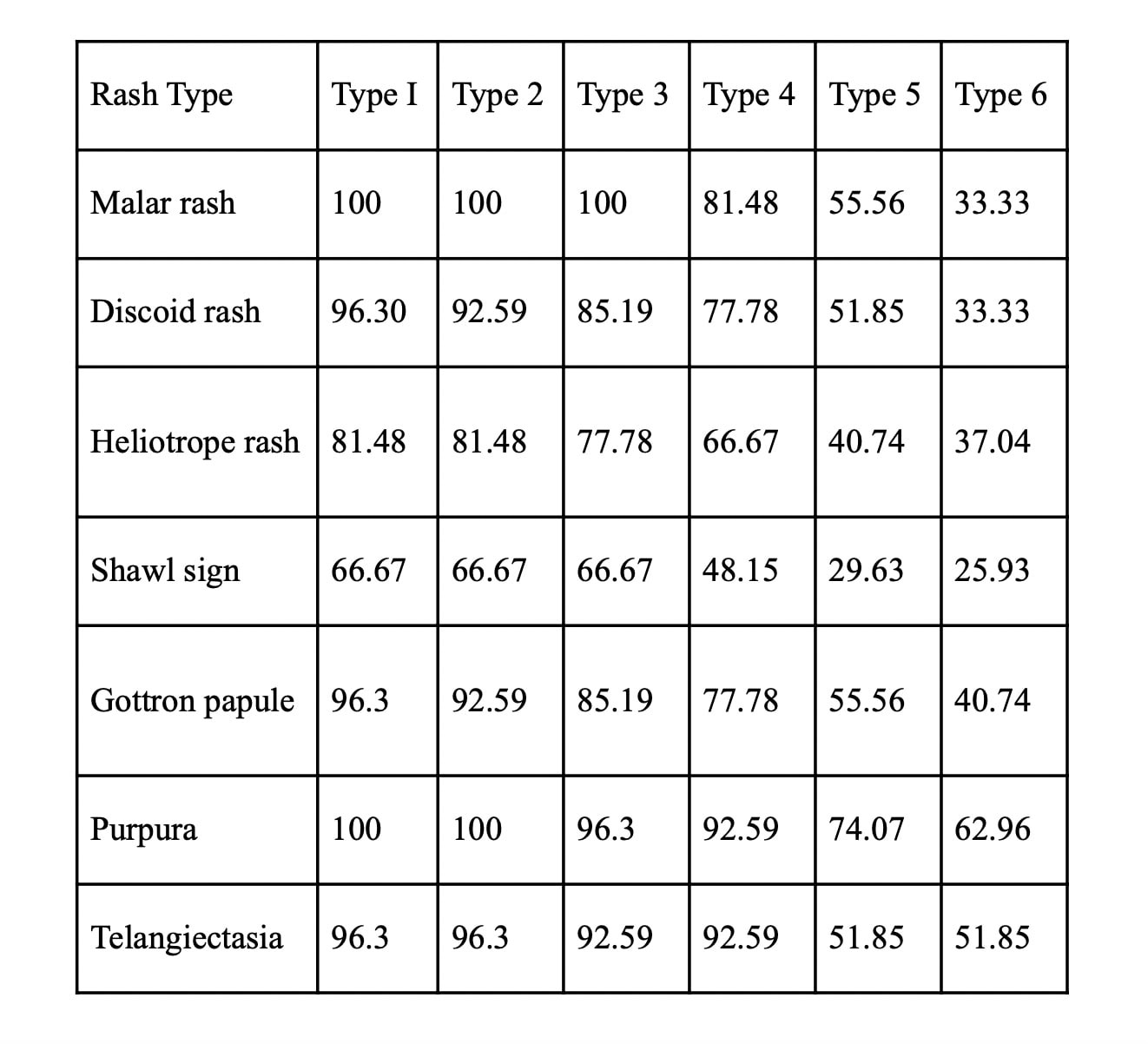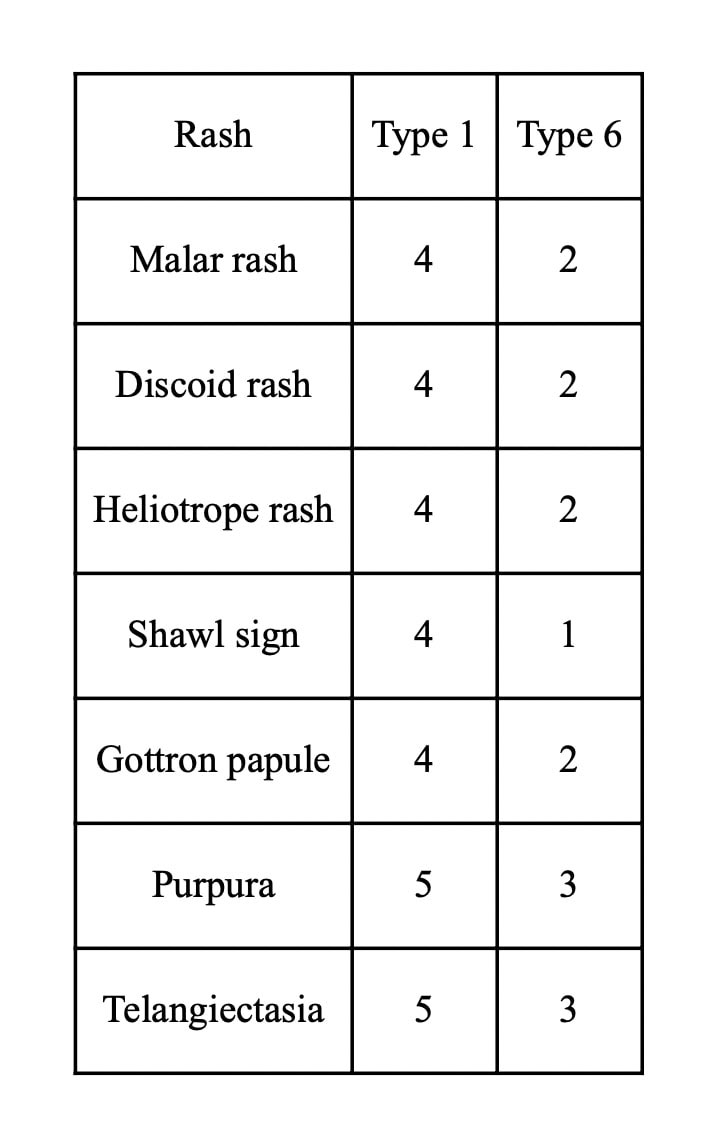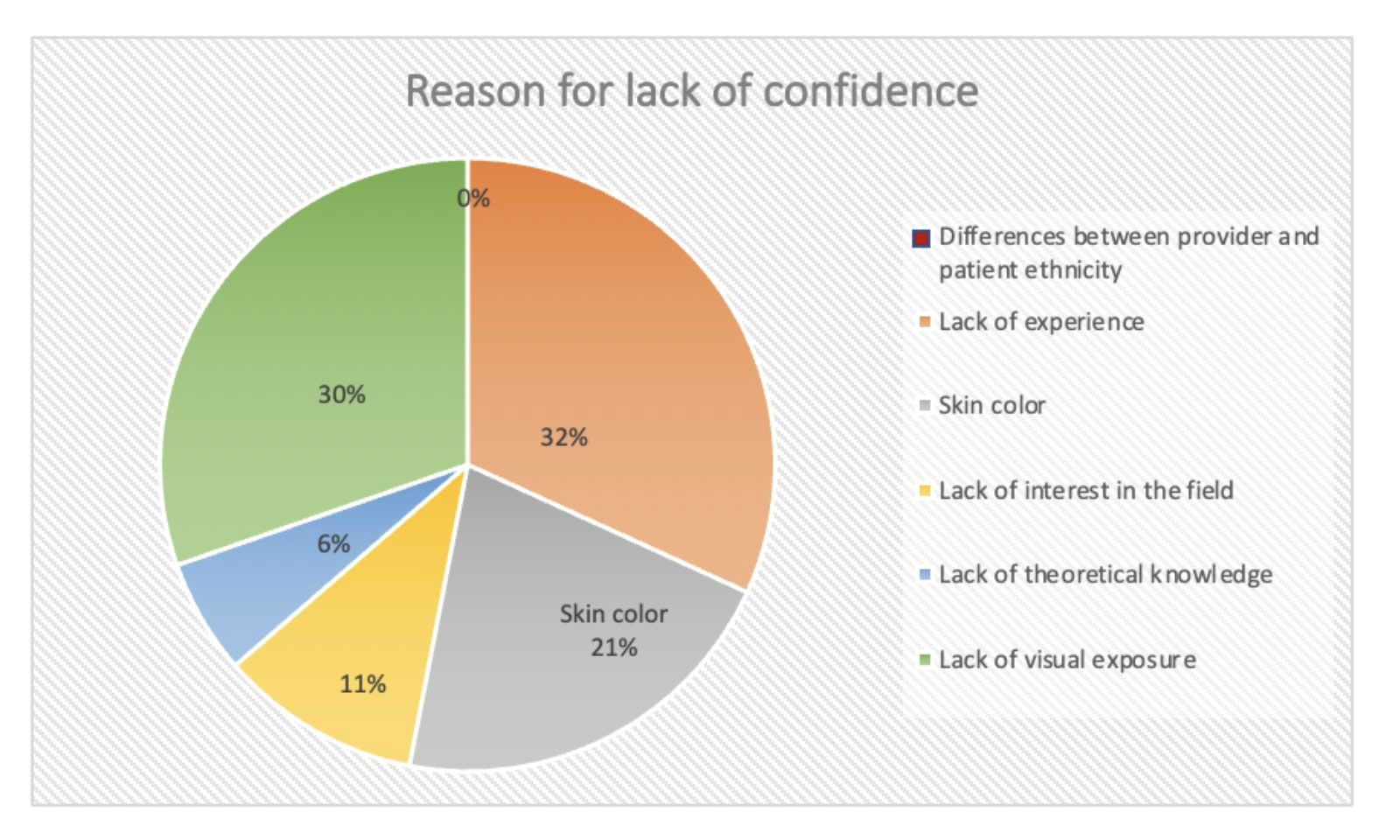Session Information
Session Type: Poster Session B
Session Time: 9:00AM-10:30AM
Background/Purpose: Rheumatologic conditions such as lupus and others tend to present more aggressively in patients of Hispanic and African American ethnicity. There are multiple reasons why it is difficult to recognize dermatological manifestation in people of color. It could be due to varied presentation, lack of representation in medical textbooks, educational curricula, and web-based medical resources which have been proven in multiple studies. (1,2) Ignoring skin manifestations can lead to delay in diagnosis contributing to morbidity and mortality in patients. Our study goals were to calculate the self-reported confidence levels of residents in diagnosing various skin lesions across different Fitzpatrick skin types. As well as explore the reasons for difficulty in diagnosing rashes in people of color among a diverse group of residents catering to a population composed of predominantly African- American and Hispanic ethnicity.
Methods: We created and distributed a survey among internal medicine residents in a city hospital in the Bronx, to further characterize the level of confidence that they have towards diagnosing common rheumatologic related rashes in different types of skin. Aside from demographic personal information, subjects were asked to grade on a scale from 1 to 5 how confident they feel recognizing these rashes on the different types of skins based on the Fitzpatrick classification (Type 1 to 6). Descriptive statistics were used to express the percentage of residents feeling either confident (options 3-4-5 from the Likert scale) or not confident (options 1-2 from the Likert scale) based on the different skin types as well as the reasons affecting their confidence. Median and Means were used to describe continuous and ordinal variables.
Results: 27 residents in various stages of training responded to the survey. The percentage of responders who are confident about diagnosing various skin lesions in different Fitzpatrick skin types is tabulated in table 1. Across all lesions, a higher percentage was confident about diagnosing the lesions in lighter skin color (Fitzpatrick type 1-4) compared to darker skin (type 5-6). Consistent with this trend the median self-reported confidence score on Likert scale was higher in type skin compared to type 6 skin (Table 2). Lesser number of respondents were confident about diagnosing heliotrope rash and shawl sign compared to other lesions. This trend remained similar across all skin types. 74.1% percent of responders identified a lack of visual exposure during training and 77% identified lack of experience as the most common reason for the lack of confidence in making a diagnosis. 51.8 % identified skin color, 25.9 % identified lack of interest in the field and 14.8% identified lack of theoretical knowledge.
Conclusion: In general terms for the most common skin findings in rheumatologic conditions, confidence level are lower for darker tones of skin. The most common reasons attributed to these findings were lack of experience, lack of visual exposure. Training with more educational materials in darker skin color can be targeted to improve the confidence level in identifying skin lesions in darker skin.
To cite this abstract in AMA style:
Jinjolava N, Cano J, Peringeth G, Mehta A, Syed T. Rheumatologic Rashes in Different Skin Types and Confidence in Diagnosis Among Internal Medicine Residents in a New York City Hospital [abstract]. Arthritis Rheumatol. 2022; 74 (suppl 9). https://acrabstracts.org/abstract/rheumatologic-rashes-in-different-skin-types-and-confidence-in-diagnosis-among-internal-medicine-residents-in-a-new-york-city-hospital/. Accessed .« Back to ACR Convergence 2022
ACR Meeting Abstracts - https://acrabstracts.org/abstract/rheumatologic-rashes-in-different-skin-types-and-confidence-in-diagnosis-among-internal-medicine-residents-in-a-new-york-city-hospital/



